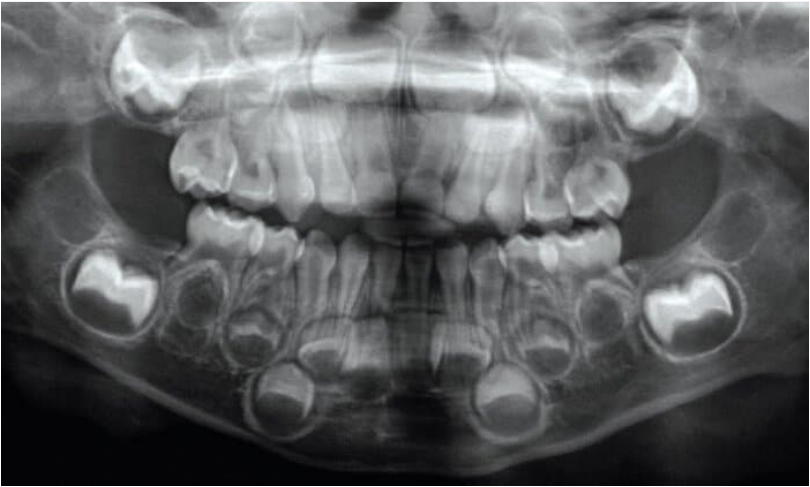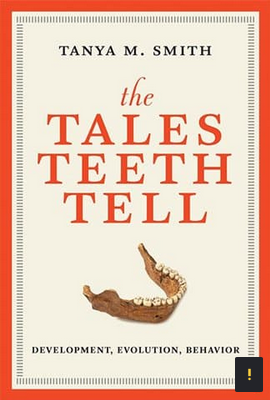
- Tanya M. Smith
The French paleontologist George Cuvier famously remarked, “Show me your teeth and I will tell you who you are.” As the forefather of comparative anatomy, Cuvier helped to establish how the shape of a structure relates to its function. The pointed canines of lions are useful for piercing animal prey, for example, while the flat molar teeth found in specialized seed-eating monkeys efficiently crush and grind hard objects. Paleontologists use the anatomy and behavior of modern animals to infer the diets of extinct species, thus “telling” what something is from their teeth alone.
This article is adapted from Tanya M. Smith’s book “The Tales Teeth Tell: Development, Evolution, Behavior.”
Cuvier also pointed to a deeper truth about teeth, albeit unintentionally, since the details of an individual’s early life are registered in perpetuity. Teeth are unlike any other body part, recording physiological rhythms as often as every 8–12 hours, and as infrequently as every season or year. Kids today learn about annual tree rings in elementary school, yet many dentists and oral health specialists are surprisingly unaware that the focus of their livelihoods is a sophisticated time machine — one that, amazingly, goes all the way back to before birth.
Baby teeth begin calcifying when we are still in the uterus, as does our first permanent molar. These teeth preserve lines that indicate the temporary position of enamel- and dentine-forming cells during birth. Scientists discovered these neonatal lines by examining hundreds of baby teeth from human children, finding dark, accentuated lines in a similar position in most teeth. Dental researcher Isaac Schour was the first to suggest that this microscopic disruption is caused by the physiological transition of birth. Others have since counted subsequent daily growth lines in young individuals, finding close agreement with their age and confirming that this line is indeed formed at birth.
Under the microscope one can often see that enamel prisms deviate slightly from their straight course as they pass through the neonatal line. The adjacent enamel also shows a change in mineralization, producing a darkly contrasted line. Some hypothesize that these lines appear in infants’ teeth because of changing calcium levels during or just after birth.
Being able to find dental birth certificates and subsequent physiological disruptions etched into teeth has opened up new possibilities for understanding the development of our ancestors and close evolutionary relatives. Neonatal lines allow precise age estimates for young individuals in the fossil record though counts of the microscopic daily growth between birth and death, when tooth formation ceases prematurely. This has helped to confirm that earlier hominins grew and erupted their teeth more quickly than humans living today — likely maturing earlier than modern children. The presence of postnatal accentuated lines has also allowed us to explore the first few years of Neanderthal childhoods on a weekly basis — showing greater disruptions during wintertime, including a likely illness during the height of winter. These are just a few of many tales that we can tease out of those who are brave enough to bare their teeth.
https://thereader.mitpress.mit.edu/birth-certificate-neonatal-lines/


Comments2
Proof Roulet was lead poisoned by Nazis
Proof Roulet was lead poisoned by NAZIS
Why I added to my ICESaturn distribution list
Why I added to my ICESaturn distribution list the author of
Why JEW NAZIS WORST GENOCIDE OF JEW BLACKS MURDA CAP “Baby Tooth Survey” of a radioactive variant of strontium in children born in St. Louis, Missouri before, during, and after a period of especially heavy nuclear testing in 1953.
By Norm Roulet, 19 November, 2024
Worst Blacks of Jews EVER
Jew Blacks
Teeth reveal juvenile diet, health and neurotoxicant exposure retrospectively: What biological rhythms and chemical records tell us
Tanya M. Smith
First published: 15 March 2021
https://icesaturn.com/Jew-Nazis-St-Louis